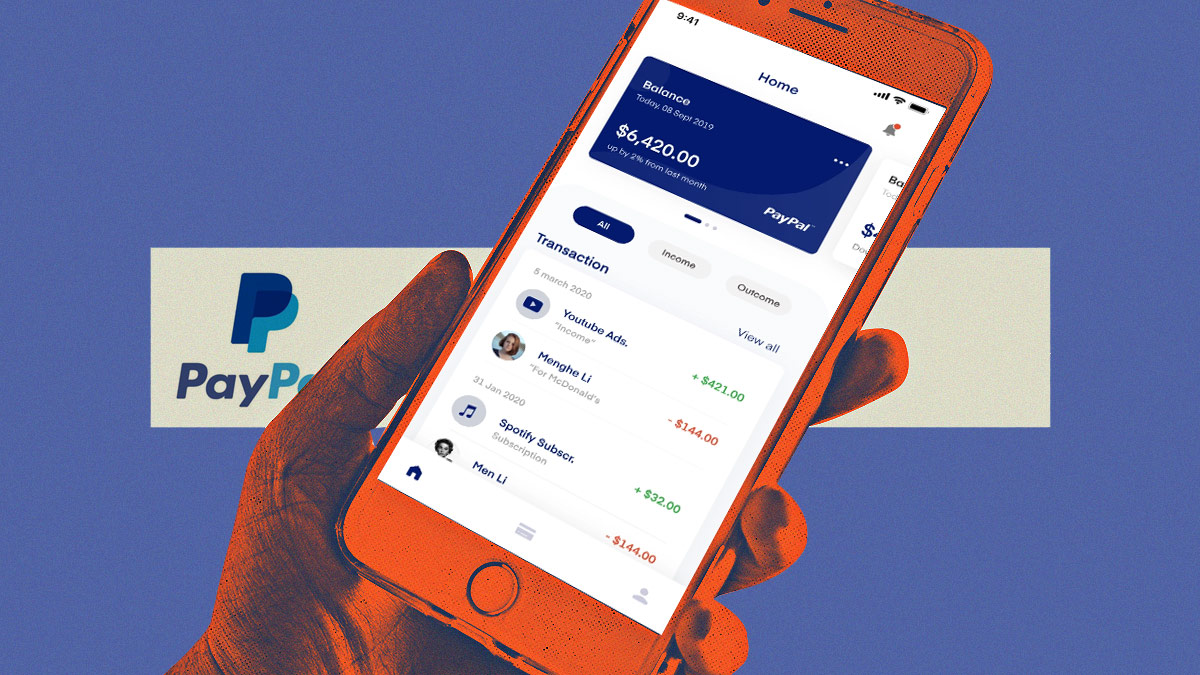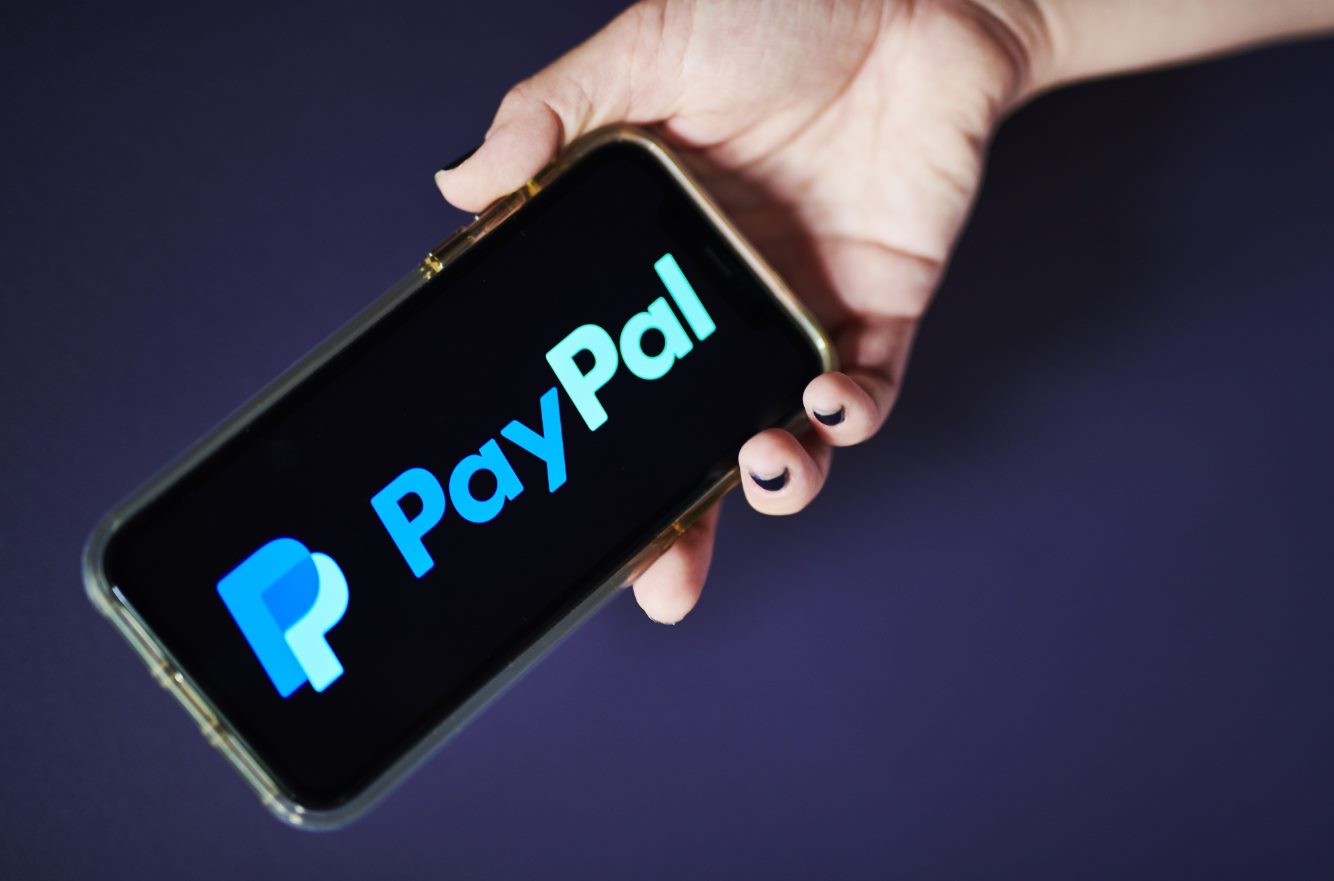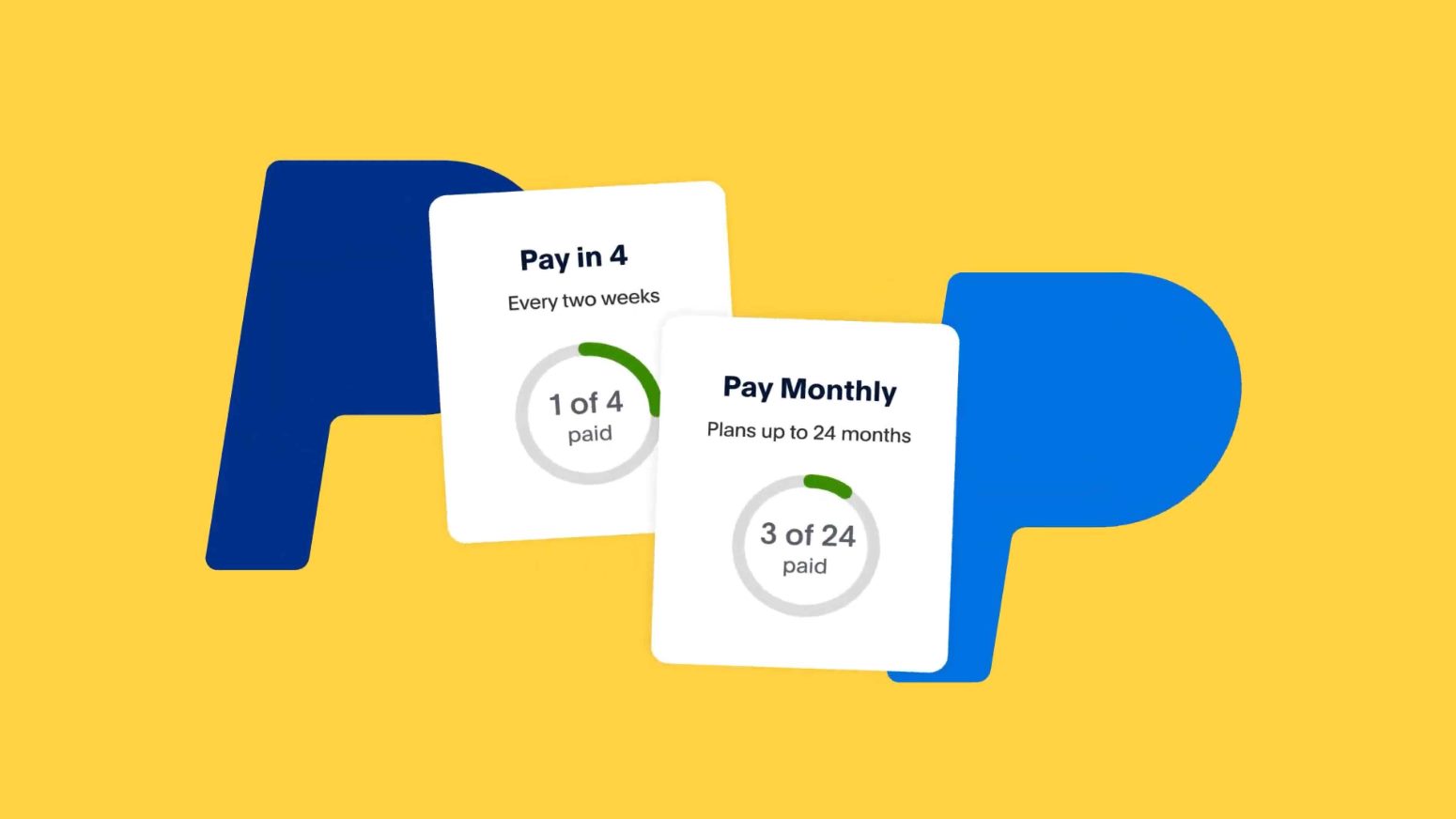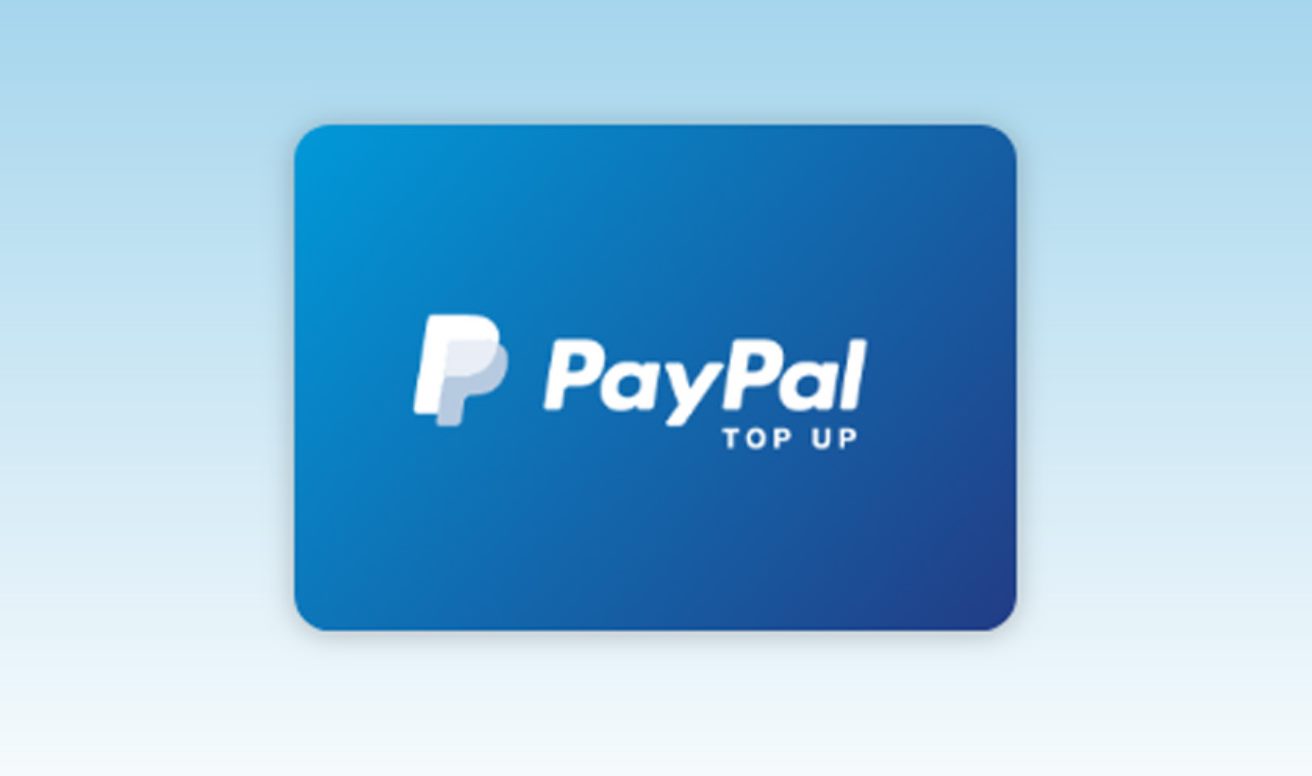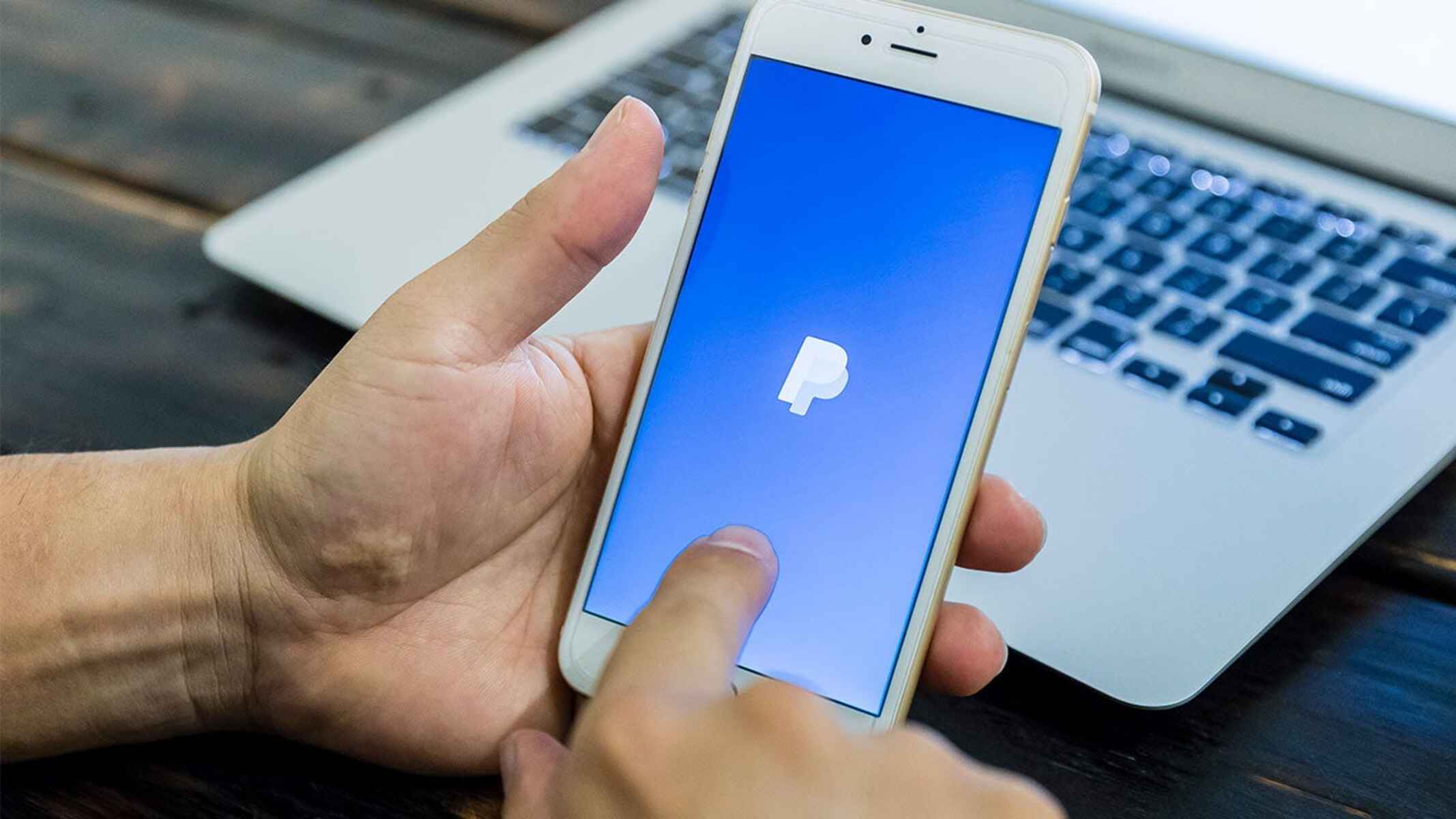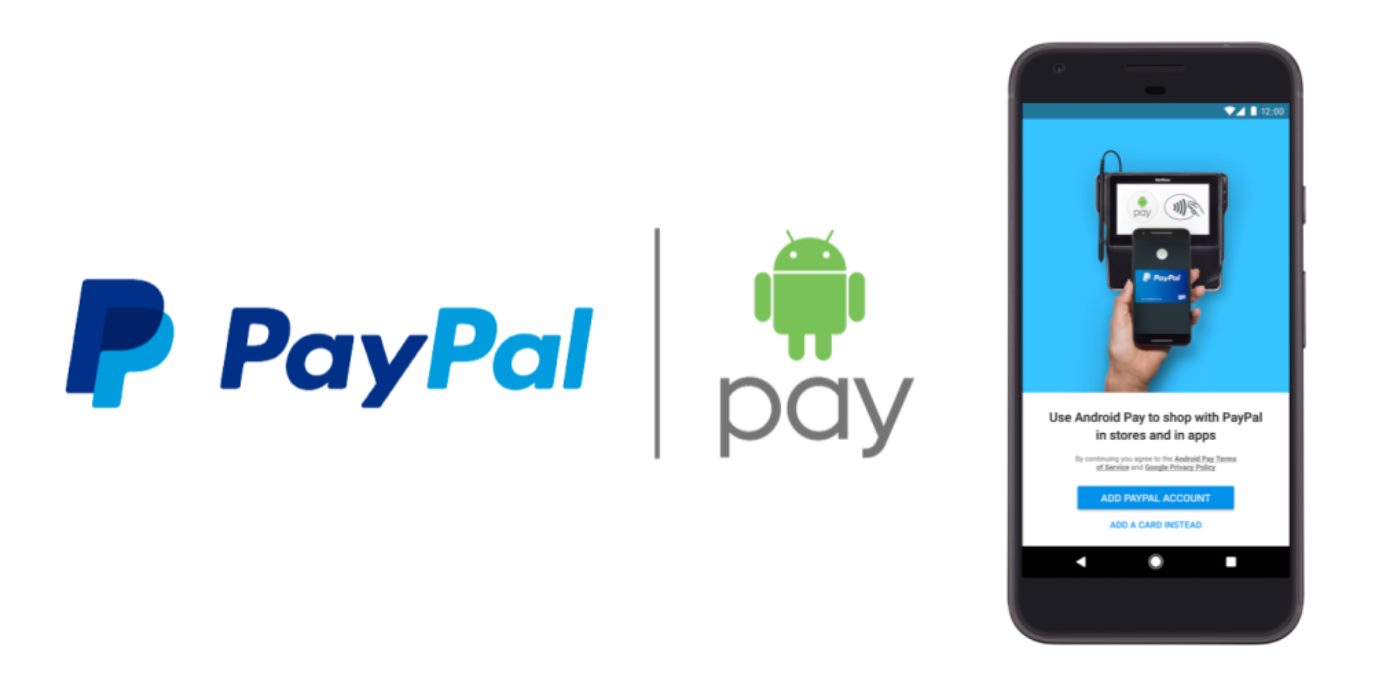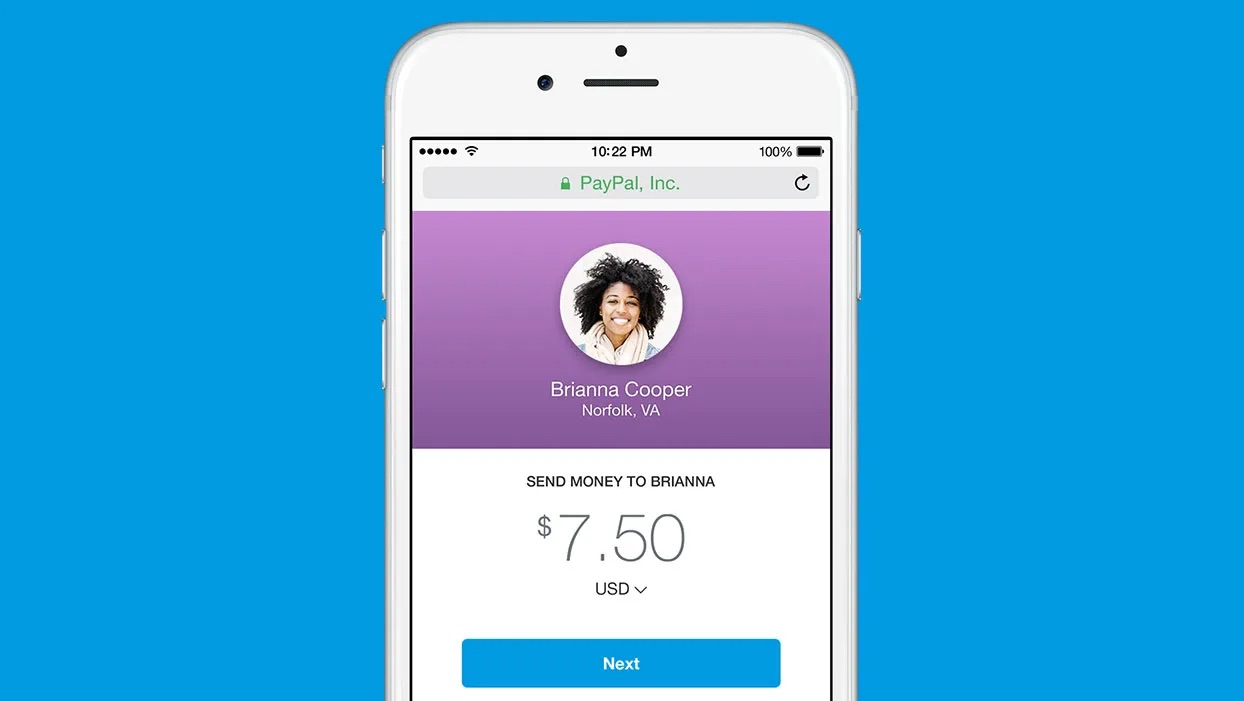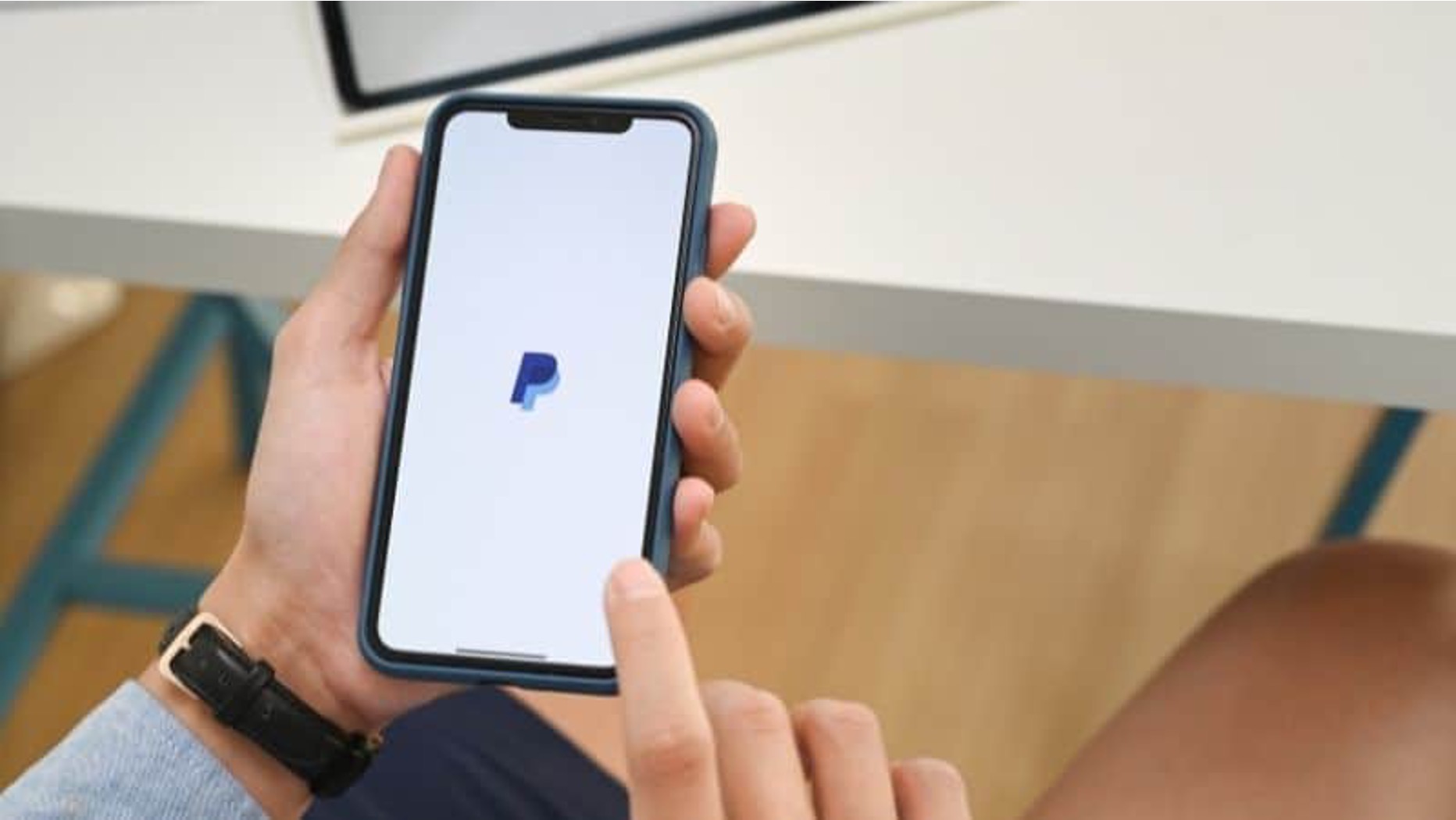Introduction
Welcome to the world of PayPal, the leading online payment platform that has revolutionized the way people send and receive money across the globe. Whether you’re an individual looking to make secure online payments or a business owner seeking a convenient way to accept payments, PayPal offers a range of features and functionalities to meet your needs.
With PayPal, you can easily transfer money to friends, family, and businesses, making it the go-to option for e-commerce transactions, online shopping, and even peer-to-peer payments. In this article, we will guide you through the various aspects of using PayPal, from setting up an account to exploring its features and benefits.
Setting up a PayPal account is quick and straightforward. We will walk you through the process of creating an account and also guide you on how to add your preferred payment methods, such as credit or debit cards and bank accounts, to your PayPal account.
Verifying your PayPal account is an essential step to gain access to higher transaction limits and enhanced security features. We will explain the verification process and the advantages of becoming a verified PayPal user.
Once your account is set up and verified, we will delve into the various ways you can make and receive payments with PayPal. Whether you want to send money to a friend for splitting expenses or receive payments for goods and services, PayPal offers convenient options for both.
Furthermore, we will discuss the seamless integration of PayPal with online shopping platforms. Discover how you can use PayPal to securely make purchases from your favorite online stores and enjoy the added buyer protection offered by PayPal.
For those interested in linking their PayPal account to their bank account, we will cover the steps involved and the benefits of doing so. Withdrawing money from your PayPal account has never been easier.
Throughout this article, we will also shed light on PayPal’s buyer and seller protection policies. Understand how PayPal works to ensure a secure and reliable platform for both buyers and sellers, providing peace of mind for all parties involved in a transaction.
For those who are always on the go, we will explore the PayPal mobile app, which brings the convenience of PayPal right to your fingertips. Learn how to manage your transactions, send money, and even scan and pay with your smartphone.
Finally, we will compare the features and benefits of a PayPal business account versus a personal account, helping you decide which option is right for your specific needs.
Rest assured, PayPal takes security and privacy seriously. We will discuss the different measures PayPal has in place to protect your sensitive information and ensure a safe and secure payment experience.
So, whether you’re new to PayPal or looking to maximize your use of the platform, this comprehensive guide will walk you through everything you need to know about PayPal, helping you make the most of this powerful payment tool.
Setting Up a PayPal Account
Setting up a PayPal account is a straightforward process that allows you to send and receive money online securely. Follow these steps to create your own PayPal account:
- Go to the PayPal website (www.paypal.com) and click on the “Sign Up” button.
- Choose between a personal account or a business account. A personal account is suitable for individuals who want to make online payments, while a business account is ideal for merchants who want to accept payments for goods and services.
- Provide your email address, which will be used as your PayPal username, and create a strong password for your account.
- Fill in your personal information, including your name, address, and phone number. This information is necessary for security and verification purposes.
- Read and accept the PayPal user agreement and privacy policy.
- Verify your email address by clicking on the link sent to your registered email. Confirming your email is an important step in the account creation process.
- Once your email is verified, you will be prompted to link a payment method to your account. You can choose to add a credit card, debit card, or bank account to fund your PayPal transactions.
- Follow the instructions to securely link your chosen payment method to your PayPal account. This step ensures that you have a convenient and hassle-free experience while making payments and receiving funds.
Your PayPal account is now set up and ready to use. Remember to keep your login credentials secure and avoid sharing them with anyone.
With a PayPal account, you gain access to a variety of features and benefits. Whether you’re an individual looking to make online purchases or a business owner wanting to accept payments, PayPal offers a reliable and trusted platform for all your financial needs.
Next, we will explore the process of adding payment methods to your PayPal account, allowing you to conveniently fund your transactions and enjoy the seamless payment experience that PayPal provides.
Adding Payment Methods to Your PayPal Account
Once you have set up your PayPal account, the next step is to add payment methods to fund your transactions. PayPal provides various options for linking payment methods, including credit cards, debit cards, and bank accounts. Here’s how you can add payment methods to your PayPal account:
- Log in to your PayPal account using your registered email address and password.
- Click on the “Wallet” tab, which will display a list of the payment methods currently linked to your account.
- To add a credit or debit card, click on the “Link a card” button. Enter the required details, including the card number, expiration date, and security code. Review the information and click “Link Card” to successfully add the card to your PayPal account.
- If you prefer to link your bank account, click on the “Link a bank account” option. Enter your bank account details, including the account number and the bank’s routing number. PayPal will then verify the account by making small deposits or withdrawals and ask you to confirm the amounts. Once confirmed, your bank account will be successfully linked to your PayPal account.
- You can also add multiple payment methods to your PayPal account and choose a preferred option for your transactions. This allows for flexibility and convenience when making payments or receiving funds.
Linking payment methods to your PayPal account provides the freedom to choose how you fund your transactions. You can select the preferred payment method for each transaction or set a default payment method for all your payments. This flexibility ensures a seamless and efficient payment experience.
It’s important to note that PayPal takes the security of your payment details seriously. When you add a card or bank account to your PayPal account, your financial information is securely stored and encrypted, reducing the risk of unauthorized access. Additionally, PayPal’s advanced fraud detection systems actively monitor transactions to protect you against fraudulent activities.
With your payment methods securely linked to your PayPal account, you are now ready to enjoy the convenience and security of making and receiving payments with PayPal. In the next section, we will discuss the process of verifying your PayPal account to unlock additional features and benefits.
Verifying Your PayPal Account
Verifying your PayPal account is an important step that enhances the security and functionality of your account. By verifying your account, you gain access to higher transaction limits, enjoy additional features, and instill trust in potential buyers and sellers. Here’s how you can verify your PayPal account:
- Log in to your PayPal account using your registered email address and password.
- Click on the “Settings” icon at the top right corner of the page, and select “Account Settings” from the drop-down menu.
- Under the “Account Summary” section, click on the “Get Verified” link next to your account status.
- Follow the prompts to complete the verification process. PayPal may ask you to provide additional information, such as your address, identification documents, or a linked bank account.
- Once you have provided the necessary information, PayPal will review your details and notify you of the verification status. This process may take a few days, so be patient and check your email regularly for updates.
- Once your account is verified, you will receive a confirmation email from PayPal, and your account status will reflect the verified status.
Verifying your PayPal account not only increases your transaction limits but also adds an extra layer of security. Verified accounts are less likely to face restrictions or suspensions, as they demonstrate a higher level of trustworthiness.
Moreover, a verified PayPal account enables you to take advantage of additional features, such as requesting and receiving payments directly from your PayPal account, withdrawing funds to your bank account, and accessing PayPal Seller Protection for eligible transactions.
Another benefit of verifying your PayPal account is gaining the trust of potential buyers and sellers. Many users prefer to engage in transactions with verified PayPal accounts, as it provides assurance and peace of mind.
It’s worth noting that while verification is not mandatory for using PayPal, it is highly recommended to unlock the full range of benefits and features the platform has to offer.
In the next section, we will explore the various ways you can make payments with PayPal, allowing you to securely and conveniently send money to friends, family, and businesses around the world.
Making Payments with PayPal
PayPal makes it easy and convenient to make payments online, whether you’re purchasing goods, paying for services, or sending money to friends and family. With a few simple steps, you can securely transfer funds using PayPal. Here’s how:
- Log in to your PayPal account using your registered email address and password.
- Click on the “Send & Request” tab at the top of the page.
- Enter the email address or mobile number of the recipient in the “To” field.
- Specify the amount you wish to send and select the currency of the payment.
- Choose the purpose of the payment, such as “Goods or services,” “Friends and family,” or “Other.” Depending on the purpose, PayPal may charge a small fee for certain transactions.
- Add an optional note to the recipient to provide additional information about the payment.
- Review the payment details, including the amount and recipient, to ensure accuracy.
- Click “Send Payment” to complete the transaction.
PayPal allows you to make payments using your linked payment methods, such as credit cards, debit cards, or bank accounts. When you make a payment, PayPal will use your selected funding source to fund the transaction.
One of the benefits of using PayPal for payments is the added layer of security. PayPal employs advanced encryption technology and fraud detection systems to protect your financial information and ensure secure transactions. Additionally, PayPal offers Buyer Protection, which safeguards eligible purchases in case of unauthorized transactions or item disputes.
PayPal also offers options for recurring payments, making it convenient for subscription services or monthly bills. You can set up automatic payments for consistent payments without the need to manually authorize each transaction.
Furthermore, PayPal provides a seamless checkout experience on various online platforms, allowing you to make payments quickly and securely without having to enter your payment details repeatedly. Look for the PayPal checkout option while shopping online to enjoy the convenience and peace of mind that PayPal provides.
In the next section, we will explore how you can send money to friends and family using PayPal, enabling you to split expenses, repay loans, or simply send a gift with ease.
Sending Money with PayPal
PayPal offers a convenient and secure way to send money to friends and family, whether you need to split expenses, repay a loan, or simply send a gift. With a few easy steps, you can transfer funds using PayPal. Here’s how:
- Log in to your PayPal account using your registered email address and password.
- Click on the “Send & Request” tab at the top of the page.
- Choose the “Send to friends and family” option.
- Enter the email address or mobile number of the recipient.
- Specify the amount you want to send and select the currency.
- Add an optional note to accompany the payment.
- Review the payment details to verify the accuracy.
- Click “Send Payment” to complete the transaction.
When sending money to friends and family, PayPal does not charge any fees for the transaction if you are using your PayPal balance or a linked bank account. However, if you choose to use a credit card as the funding source, PayPal may charge a small fee.
Sending money with PayPal is not limited to just domestic transactions. You can easily send money internationally, allowing you to support friends or family members abroad or make payments for products or services globally.
One of the advantages of using PayPal for peer-to-peer payments is the added security features. PayPal helps protect both the sender and the recipient, providing peace of mind during transactions. Additionally, PayPal offers Seller Protection for eligible transactions, ensuring that merchants are protected from fraudulent activities or unauthorized claims.
In addition to sending money to individuals, PayPal also enables you to make payments to businesses. Whether you’re settling a bill for a service received or paying for an online purchase, PayPal offers a seamless and secure way to complete your transactions.
Furthermore, PayPal offers a user-friendly interface and a mobile app, making it easy to send money on the go. With just a few taps on your smartphone, you can quickly send money to friends, family, or businesses, no matter where you are.
Next, we will explore how you can request money using PayPal, allowing you to conveniently remind others to fulfill their payment obligations or make it effortless for your customers to settle their bills.
Requesting Money with PayPal
PayPal provides a simple and efficient way to request money from individuals or businesses. Whether you need to remind someone to settle a debt or make it convenient for your customers to pay for products or services, PayPal offers a hassle-free solution. Here’s how you can request money using PayPal:
- Log in to your PayPal account using your registered email address and password.
- Click on the “Send & Request” tab at the top of the page.
- Choose the “Request” option.
- Enter the email address or mobile number of the person or business you are requesting money from.
- Specify the amount you wish to request and select the appropriate currency.
- Add an optional note to provide details or context for the payment request.
- Review the payment details to ensure accuracy.
- Click “Request Money” to complete the transaction.
When requesting money using PayPal, the recipient will receive a notification with your request. They can then review the details and choose to accept or decline the payment. Once they approve the request, the funds will be transferred to your PayPal account.
PayPal makes it easy to keep track of your payment requests. You can view the status of your requests and any pending payments in your PayPal account. This feature helps you stay organized and ensures that you can follow up on any outstanding payments.
In addition to individual payment requests, PayPal also offers invoicing options for businesses. You can create professional invoices with detailed information about the products or services provided, including item descriptions, quantities, and prices. This makes it convenient for your customers to view and settle their bills, enhancing efficiency and streamlining your billing process.
PayPal also provides customizable options for invoicing, allowing you to add your company logo and contact information to create a professional and branded invoice. You can easily track and manage your invoices within your PayPal account, providing a convenient overview of your transaction history.
PayPal’s invoicing feature is particularly beneficial for freelancers, small businesses, and service providers who need a reliable and efficient way to request payment from their clients. It eliminates the need for manual invoicing processes and streamlines the payment collection process.
With PayPal’s request money feature and invoicing options, you can easily collect the funds you are owed, simplifying your financial transactions and ensuring smooth payment processes.
In the next section, we will discuss how you can receive money using PayPal, allowing you to effortlessly access and manage your funds.
Receiving Money with PayPal
One of the key advantages of using PayPal is the ability to receive money quickly and securely. Whether you’re a freelancer receiving payments for your services, an online store owner processing customer orders, or simply receiving money from friends or family, PayPal provides a seamless method for receiving funds. Here’s how you can receive money using PayPal:
- Log in to your PayPal account using your registered email address and password.
- On your account overview page, you will see your PayPal balance, along with any pending payments or recent transactions.
- For online store owners or sellers, PayPal provides various integration options. You can easily generate payment buttons or utilize PayPal’s API to integrate with your website or e-commerce platform, allowing customers to make payments directly to your PayPal account.
- For freelancers or service providers, you can simply provide your PayPal email address to clients or customers as a means of receiving payment. They can then initiate a payment to your PayPal account by entering your email address during the payment process.
- If you prefer to create professional invoices, PayPal offers a comprehensive invoicing feature. You can generate detailed invoices with itemized descriptions, quantities, and prices, providing a clear breakdown of the products or services rendered. Your customers can then make payments directly through the invoice, ensuring a seamless and efficient payment process.
- Once a payment is received, you will be notified via email or through your PayPal account. Funds will be deposited into your PayPal balance, which you can access and manage at any time.
- From your PayPal account, you can choose to withdraw funds to your linked bank account, use the funds for future PayPal transactions, or keep them in your PayPal balance for future use.
Receiving money with PayPal is not restricted to domestic transactions. PayPal supports international payments, allowing you to receive funds from customers or clients located anywhere in the world. This expands your reach and enables you to conduct business on a global scale.
PayPal offers a secure payment environment, protecting your financial information and providing peace of mind for both the sender and the recipient. With advanced encryption technology and robust fraud detection systems, PayPal ensures that your transactions are safe and secure.
PayPal’s user-friendly interface and mobile app make it easy to keep track of your received payments. You can view your transaction history, monitor pending payments, and access detailed reports for accounting and reconciliation purposes.
Whether you’re an individual receiving funds from family and friends or a business owner processing customer payments, PayPal provides a reliable and efficient platform for receiving money in a hassle-free manner.
Next, we will explore how PayPal can be used for online shopping, making the checkout process seamless and secure.
Using PayPal for Online Shopping
PayPal has become widely accepted as a preferred payment method for online shopping, offering convenience, security, and buyer protection. With PayPal, you can easily make purchases from your favorite online stores without revealing your financial information. Here’s how you can use PayPal for online shopping:
- Look for the PayPal checkout option on the online store’s payment page. It is commonly displayed alongside other payment options such as credit cards or bank transfers.
- When you choose PayPal as your payment method, you will be redirected to the PayPal login page.
- Log in to your PayPal account using your registered email address and password.
- Confirm the payment details, including the total amount and the merchant’s information. Review the transaction to ensure accuracy.
- Select your funding source, such as your PayPal balance or a linked credit card or bank account.
- Click “Pay Now” to complete the transaction.
Using PayPal for online shopping offers several benefits. First and foremost, it adds a layer of security to your payment transactions. Instead of sharing your credit card or bank account details with each online store, you only need to provide your PayPal login credentials. This reduces the risk of your financial information falling into the wrong hands.
PayPal also provides Buyer Protection, which safeguards your purchases. If an item is not received or is significantly different from what was described, PayPal can help you resolve the issue and potentially get a refund. This protection ensures peace of mind when shopping online, especially from unfamiliar or international sellers.
Another advantage of using PayPal for online shopping is the convenience and speed of transactions. With PayPal, you can make payments in just a few clicks, eliminating the need to manually enter your payment details for each transaction. This streamlines the checkout process, allowing for a smoother and more efficient shopping experience.
Moreover, PayPal offers a seamless integration with various e-commerce platforms, making it easy for online merchants to accept payments. This means that you will find PayPal as a payment option on a wide range of online stores, allowing you to use your PayPal account for purchases across multiple websites.
PayPal’s comprehensive transaction history and activity log make it easy to track your online shopping expenses. You can review past purchases, view details of each transaction, and keep track of your spending from your PayPal account.
By using PayPal for online shopping, you can enjoy the convenience, security, and buyer protection that the platform provides, ensuring a positive and worry-free shopping experience.
In the next section, we will explore the process of linking your PayPal account to your bank account, enabling you to easily withdraw funds and manage your finances.
Linking PayPal to Your Bank Account
Linking your PayPal account to your bank account provides a seamless way to transfer funds between your PayPal balance and your bank account. By linking the two, you can easily withdraw money from your PayPal account or fund your PayPal transactions directly from your bank account. Here’s how you can link your PayPal account to your bank account:
- Log in to your PayPal account using your registered email address and password.
- Click on the “Settings” icon at the top right corner of the page and select “Account Settings” from the drop-down menu.
- Under the “Bank accounts” section, click on “Link a bank account.”
- Provide the necessary information about your bank account, such as the bank name, account holder’s name, account number, and routing number. Be sure to enter the correct details to avoid any issues during the verification process.
- Review the provided information and click “Link Bank Account” to initiate the linking process.
- PayPal will then verify your bank account by making small deposits or withdrawals. These amounts will be later used to confirm your ownership of the account.
- Keep an eye on your bank account activity and note the specific amounts deposited or withdrawn by PayPal.
- Once you have the verification amounts, return to your PayPal account and navigate to the “Bank accounts” section.
- Click on the bank account you linked and enter the verification amounts correctly.
- Click “Confirm” to complete the process of linking your PayPal account to your bank account.
Once your PayPal account is successfully linked to your bank account, you can easily transfer funds between the two. You can transfer money from your PayPal balance to your bank account, allowing you to access and manage your funds conveniently.
Furthermore, when you make purchases using PayPal and your PayPal balance is insufficient, PayPal can automatically withdraw the necessary funds from your linked bank account to complete the transaction. This ensures that your payments are always processed without any interruptions, even if your PayPal balance is low.
Linking your PayPal account to your bank account also simplifies the process of withdrawing money from PayPal. With just a few clicks, you can transfer funds from your PayPal balance directly to your bank account, making it easy to access and use your funds as needed.
It’s important to note that PayPal takes the security of your financial information seriously. When linking your bank account, PayPal uses encryption technology to protect your sensitive data. Additionally, PayPal’s industry-standard security measures ensure that your banking details and transactions remain secure.
By linking your PayPal account to your bank account, you can enjoy the convenience of seamless fund transfers and easily manage your finances. Whether you’re withdrawing funds or funding your PayPal transactions, the ability to link your bank account provides flexibility and control over your financial transactions.
In the next section, we will discuss the process of withdrawing money from your PayPal account, allowing you to access your funds and use them as needed.
Withdrawing Money from PayPal
Withdrawing money from your PayPal account is a straightforward process that allows you to access your funds and use them as needed. Whether you want to transfer money to your bank account or make payments directly from your PayPal balance, PayPal offers convenient options for withdrawing funds. Here’s how you can withdraw money from your PayPal account:
- Log in to your PayPal account using your registered email address and password.
- Click on the “Wallet” tab at the top of the page to access your PayPal balance.
- To transfer money to your linked bank account, click on “Transfer Money.”
- Choose the bank account you want to transfer the funds to and enter the amount you wish to withdraw.
- Review the transaction details to ensure accuracy and click “Next” to proceed.
- Review the summary of the transaction and confirm the withdrawal by clicking “Transfer”
- PayPal will process the transfer, and the funds will be deposited into your linked bank account. The duration of the transfer may vary depending on your bank’s processing times.
- If you prefer to make payments directly from your PayPal balance, you can use the balance to pay for online purchases at websites that accept PayPal. During the checkout process, ensure that you have selected your PayPal balance as the funding source, and the payment will be deducted from your available funds.
PayPal offers flexibility when it comes to withdrawing funds. You can transfer the entire PayPal balance to your bank account or choose to withdraw only a portion of the funds as needed.
It’s important to note that PayPal may charge nominal fees for certain transactions, such as international transfers or currency conversions. Before initiating a withdrawal, review the transaction summary to understand any applicable fees.
Withdrawing money from your PayPal account is a secure process. PayPal employs advanced encryption technology to protect your financial information and ensures that your transactions are safe and secure.
Additionally, PayPal provides a detailed transaction history that allows you to track and monitor your withdrawals. You can view the status and details of each transaction within your PayPal account, providing transparency and visibility into your financial activities.
By withdrawing money from your PayPal account, you can access your funds conveniently and use them for various purposes such as paying bills, making purchases, or transferring money to your bank account.
In the next sections, we will delve into PayPal Buyer Protection and Seller Protection, which offer additional layers of security for both buyers and sellers during transactions.
PayPal Buyer Protection
PayPal offers Buyer Protection, a valuable feature that helps safeguard buyers when making purchases through the platform. Buyer Protection is designed to provide peace of mind and ensure a secure and satisfactory shopping experience. Here’s how PayPal Buyer Protection works:
When you make a purchase using PayPal and encounter an issue with the transaction, such as an item not being received or being significantly different from the description, PayPal steps in to help resolve the problem. If you are eligible for Buyer Protection, you can file a dispute with PayPal within a specified timeframe.
To initiate a dispute, log in to your PayPal account and navigate to the Resolution Center. Select the transaction in question and follow the prompts to provide relevant details, including any supporting evidence such as communication with the seller or proof of shipment.
Once the dispute is filed, PayPal will act as a mediator between the buyer and seller, facilitating communication and working toward a resolution. PayPal will review the case and make a decision based on the provided information and their policies. The aim is to ensure a fair outcome for all parties involved.
If the dispute is resolved in the buyer’s favor, PayPal may issue a refund for the full purchase amount, including the original shipping costs. In some cases, PayPal may ask the buyer to return the item to the seller before issuing a refund. PayPal will provide instructions on how to proceed, and the buyer will be responsible for any postage or shipping costs associated with the return.
It’s important to note that Buyer Protection has specific eligibility criteria and limitations. For example, eligible items must be physical goods that can be shipped, and certain types of transactions, such as real estate or vehicles, may not be covered. Additionally, any dispute or claim must be filed within the specified timeframe outlined by PayPal.
PayPal’s Buyer Protection extends worldwide, allowing buyers to shop with confidence from both domestic and international sellers. It helps protect against fraud, misrepresentation, or nondelivery, and provides buyers assurance that they can receive a refund if the transaction does not meet their expectations.
While PayPal Buyer Protection is a valuable feature, it’s important for buyers to exercise caution and ensure they fully understand the terms and conditions of the protection. This includes carefully reviewing seller information, descriptions, and policies before making a purchase.
By offering Buyer Protection, PayPal demonstrates its commitment to providing a secure and reliable platform for online transactions. This protection enhances trust and confidence in the PayPal ecosystem, making it an attractive option for buyers around the world.
In the next section, we will explore PayPal Seller Protection, which offers similar security measures for sellers, ensuring their transactions are protected as well.
PayPal Seller Protection
PayPal Seller Protection is a valuable feature offered by PayPal that helps protect sellers from certain risks and fraudulent activities during online transactions. It provides sellers with peace of mind and safeguards their interests when conducting business through PayPal. Here’s how PayPal Seller Protection works:
When sellers qualify for Seller Protection, they are covered against unauthorized transactions, claims, or chargebacks filed by buyers. This protection aims to prevent sellers from incurring financial losses due to fraudulent or unjust claims.
To be eligible for Seller Protection, sellers must meet specific criteria, including maintaining a PayPal account in good standing, selling tangible goods that can be shipped, and providing proof of delivery or shipment. Sellers must also comply with PayPal’s Seller Protection policies and follow best practices for secure transactions.
If a seller receives a dispute or a claim from a buyer, they can respond through the Resolution Center in their PayPal account. Providing accurate and timely information along with relevant evidence, such as tracking information or proof of delivery, is crucial to strengthen their case.
PayPal will review the information provided by both the seller and the buyer and make a fair decision based on the available evidence. If the seller is found to be eligible for Seller Protection and has met all the necessary requirements, PayPal may reimburse the seller for the full transaction amount, including shipping costs.
Additionally, Seller Protection helps protect sellers against chargebacks initiated by buyers through their credit card companies or financial institutions. PayPal will investigate the chargeback and work on the seller’s behalf to provide necessary evidence and documentation to refute the claim.
It’s important to note that Seller Protection has specific limitations. It does not cover certain situations, such as claims arising from digital or intangible goods, or if the seller has not fulfilled their obligations as per the terms of the transaction. It’s essential for sellers to carefully review PayPal’s policies and guidelines to understand the extent of their coverage.
PayPal’s Seller Protection contributes to building trust and confidence among sellers, especially in online marketplace environments. It offers a safety net, allowing sellers to focus on their business without the constant fear of fraudulent disputes or chargebacks.
By offering Seller Protection, PayPal demonstrates its commitment to creating a fair and secure environment for online transactions. It encourages sellers to accept PayPal as a payment method, knowing they have added protection against certain risks.
However, it’s important for sellers to exercise caution and follow best practices for secure transactions to minimize disputes and unauthorized transactions. Clear communication, accurate product descriptions, and efficient shipment and delivery processes can help ensure a positive experience for both sellers and buyers.
In the next section, we will discuss PayPal fees and charges, which are important to consider when using PayPal for payments and transactions.
PayPal Fees and Charges
When you use PayPal for transactions, there are certain fees and charges to be aware of. PayPal provides a transparent fee structure, and understanding these costs is important for both buyers and sellers. Here’s a breakdown of the fees and charges associated with PayPal:
1. Transaction Fees: PayPal charges a fee for receiving payments. The fee structure may vary depending on factors such as the country, the type of transaction (personal or business), and the currency. The transaction fee typically ranges between 2.9% to 3.7% plus a fixed fee per transaction. It’s important to review PayPal’s website or the specific country’s fee schedule for accurate information regarding transaction fees.
2. International Transaction Fees: If you receive funds from a buyer outside your country, PayPal may apply an additional fee for the currency conversion. The conversion fee varies depending on the currency used for the transaction.
3. Chargeback Fees: In the event a buyer initiates a chargeback through their credit card company or financial institution, PayPal may charge the seller a fee for handling the dispute. The chargeback fee covers the administrative costs associated with investigating and resolving the chargeback case.
4. Refund Fees: When a seller issues a refund to a buyer, PayPal may retain the initial transaction fee paid by the seller. However, if the refund is issued within a specific timeframe, PayPal may refund a portion or the entire transaction fee.
5. Withdrawal Fees: If you choose to withdraw funds from your PayPal account to your linked bank account, PayPal doesn’t typically charge a fee. However, if you request an expedited withdrawal or use a non-local currency bank account, your bank may impose additional charges for receiving the funds.
It’s important to note that fee structures may vary depending on the country you are in, the type of account you have (personal or business), and specific agreements or promotions that PayPal may offer. It’s advisable to review PayPal’s fee schedule or contact PayPal customer service for accurate and up-to-date information regarding fees and charges.
PayPal provides a transparent breakdown of fees and charges, ensuring that both buyers and sellers understand the costs associated with using the platform. It’s important to factor in these fees when pricing products or services, as they may impact the profitability and overall cost of transactions.
By being aware of PayPal’s fee structure, you can make informed decisions when using PayPal for your financial transactions. Understanding these fees and charges will help you manage your finances more effectively and efficiently.
In the next section, we will explore the PayPal mobile app, which provides a range of features to conveniently manage your PayPal account on the go.
PayPal Mobile App
The PayPal Mobile App is a powerful tool that brings the convenience of PayPal right to your fingertips. Available for both iOS and Android devices, the PayPal Mobile App allows you to manage your PayPal account on the go, making it easy to send and receive money, track transactions, and more. Here’s what you can do with the PayPal Mobile App:
1. Send and Receive Money: The app enables you to send money to friends, family, or businesses with just a few taps on your smartphone. You can also request money from others, making it convenient for splitting bills or getting paid back.
2. Manage Transactions: With the PayPal Mobile App, you can easily track and view your transaction history. You can review past payments and monitor pending transactions, providing a comprehensive overview of your financial activities.
3. PayPal One Touch: One Touch is a feature that allows you to securely log in to your PayPal account without the need for entering your password or email every time. This feature saves you time and makes the login process fast and hassle-free.
4. Mobile Wallet: The PayPal Mobile App acts as a mobile wallet, enabling you to store your payment methods securely. You can link your credit cards, debit cards, or bank accounts to the app, making it convenient to make payments without needing to carry physical cards.
5. Scan-and-Pay: The app includes a feature that allows you to make payments by simply scanning QR codes. This is particularly useful for in-person transactions at physical stores or when making payments to friends or family members.
6. Mobile Check Deposits: If you receive a paper check, you can use the PayPal Mobile App to deposit it directly into your PayPal account. Simply take a photo of the check, follow the prompts, and the funds will be deposited into your account.
7. Notifications and Account Alerts: The app provides real-time notifications and alerts, keeping you informed about account activity, payments, and updates. This ensures that you stay updated and can respond promptly to any important information related to your PayPal account.
8. Security Features: The PayPal Mobile App incorporates advanced security measures to protect your financial information. Biometrics, such as fingerprint or face recognition, can be used to enhance the security of the app and protect your transactions.
The PayPal Mobile App offers a seamless and user-friendly experience, allowing you to manage your PayPal account anytime and anywhere. It empowers you to handle payments, track transactions, and stay in control of your finances with ease.
Whether you’re making payments, sending money, or managing your transactions, the PayPal Mobile App provides a convenient, secure, and efficient platform for all your financial needs.
In the next section, we will discuss the difference between a PayPal Business Account and a Personal Account, helping you choose the right account type for your specific needs.
PayPal Business Account vs. Personal Account
PayPal offers two different types of accounts: Business and Personal. Each account type is designed to cater to specific needs and requirements. Understanding the differences between a PayPal Business Account and a Personal Account will help you choose the appropriate account type for your specific situation. Here’s a comparison of the two:
PayPal Business Account:
A PayPal Business Account is suited for individuals or businesses that engage in regular commercial transactions. Here are the features and benefits of a PayPal Business Account:
1. Business and Merchant Tools: A Business Account provides access to a range of business-specific tools and features. These include customizable invoicing, online checkout options, and integration with various e-commerce platforms to streamline payment processing.
2. Multiple User Access: Business Account owners have the ability to grant access to multiple users within their organization. This allows for efficient management of tasks related to payments, invoices, and customer support.
3. Seller Protection: As a seller, a Business Account offers additional protection through PayPal’s Seller Protection program. This safeguards eligible transactions against unauthorized claims or chargebacks, providing peace of mind when conducting business online.
4. Business Account Information: With a Business Account, you can provide specific business information, including your business name, logo, and contact details. This helps create a professional image and brand consistency when customers transact with you.
PayPal Personal Account:
A PayPal Personal Account is suitable for individuals who primarily use PayPal for personal payments and occasional online purchases. Here are the features and benefits of a PayPal Personal Account:
1. Peer-to-Peer Payments: A Personal Account allows you to send and receive payments from friends, family, or individuals in a peer-to-peer capacity. It is ideal for splitting bills, repaying loans, or sending money as personal gifts.
2. Easy Online Shopping: With a Personal Account, you can make secure payments when shopping online from websites that accept PayPal. This allows for convenient checkout processes and protects your financial information.
3. Individual Use: A Personal Account is intended for individual use and does not offer the advanced features and tools that businesses may require for managing payments, invoices, and other business-specific processes.
4. Simple Account Setup: Creating a Personal Account is quick and easy, requiring minimal information during the registration process.
Both Business and Personal Accounts offer the core functions of sending and receiving money, and they provide a secure and reliable platform for financial transactions. The choice between the two depends on the nature of your transactions and your specific needs.
If you are running a business, selling products or services, and require access to business tools and features, a PayPal Business Account is recommended. It provides flexibility, additional protection, and management capabilities tailored to meet your business requirements.
On the other hand, if you primarily use PayPal for personal payments, occasional online shopping, or peer-to-peer transactions, a Personal Account will suffice. It is simple, easy to use, and does not require the additional features and functionalities offered by a Business Account.
It’s important to note that you can upgrade a Personal Account to a Business Account if your needs change in the future.
In the next section, we will explore the security and privacy measures taken by PayPal to protect your account and transactions.
PayPal Security and Privacy Measures
PayPal is committed to providing a secure and trustworthy platform for financial transactions. As one of the leading online payment processors, PayPal implements a range of security and privacy measures to protect its users’ accounts and personal information. Here are some of the key security and privacy measures taken by PayPal:
1. Encryption and Data Protection: PayPal uses industry-standard encryption technology to safeguard the transmission of data between users and its servers. This encryption ensures that sensitive information, such as financial details and personal data, is securely transmitted and protected from interception.
2. Fraud Detection and Monitoring: PayPal utilizes advanced risk and fraud detection systems to identify and prevent unauthorized activities. These systems analyze transactions in real-time, flagging any suspicious patterns or unusual behavior. In case of suspicious activities, PayPal may take proactive measures to protect users’ accounts and funds.
3. Buyer and Seller Protection: PayPal offers Buyer and Seller Protection programs to add an extra layer of security during transactions. These programs help protect buyers against fraudulent activities, nondelivery, or significantly different items. Additionally, sellers are safeguarded against unauthorized claims or chargebacks, ensuring fair outcomes for all parties involved in a transaction.
4. Two-Factor Authentication: PayPal provides the option to enable two-factor authentication (2FA) as an added security measure. With 2FA, users are required to provide a secondary verification method, such as a unique code sent to their mobile device, in addition to their login credentials. This protects against unauthorized access even if the login credentials are compromised.
5. Account Monitoring and Notifications: PayPal constantly monitors user accounts for any suspicious activities. If any unusual login attempts or transactions are detected, PayPal may send notifications to alert users and prompt them to take necessary action. This ensures that users are informed about the activity on their accounts and can respond to any potential security threats.
6. Secure Buyer Information: PayPal shields buyers by keeping their financial information confidential. When making payments, the sellers receive payment details without accessing the buyers’ financial data, reducing the risk of data breaches or unauthorized use.
7. Privacy and User Control: PayPal is committed to protecting users’ privacy and provides options to control the sharing of personal information. Users can customize their privacy settings and choose which information is shared with sellers and other parties during transactions.
8. Compliance with Regulations: PayPal complies with applicable laws and regulations to ensure the security and privacy of its users’ data. The company works closely with financial regulators and law enforcement agencies to uphold the highest standards of security and data protection.
By implementing robust security and privacy measures, PayPal strives to create a safe environment for financial transactions. These measures, along with ongoing monitoring and user education, help instill confidence in users and make PayPal a trusted platform for online payments.
It’s essential for users to actively participate in ensuring their own security by using strong and unique passwords, regularly updating software and devices, and being cautious of fraudulent emails or phishing attempts.
In the next section, we will summarize the key points covered in this guide and offer a final insight into the benefits of using PayPal.
Conclusion
PayPal has revolutionized the way we send and receive money online. With its secure platform, convenience, and extensive features, PayPal has become a trusted choice for individuals and businesses alike. Throughout this guide, we have explored various aspects of using PayPal, from setting up an account to its security measures and fee structures.
We began by discussing the process of creating a PayPal account, whether it’s a Business Account for merchants or a Personal Account for individuals. We then explored the steps to link payment methods, verify the account, and make payments or request money with PayPal.
We highlighted the benefits of using PayPal for online shopping, such as the added security and buyer protection it offers. We also covered the process of linking PayPal to a bank account for easy withdrawals and managing funds.
Furthermore, we delved into the features and advantages of the PayPal Mobile App, which allows users to access and manage their PayPal account on the go. We also explained the differences between a PayPal Business Account and a Personal Account, helping users choose the right account type based on their needs.
We discussed PayPal’s commitment to security and privacy, detailing the various measures taken to protect user accounts and personal information. PayPal’s encryption, fraud detection, and buyer/seller protection programs ensure a safe and secure environment for transactions.
It is important to note that PayPal’s fee structure was addressed, providing insights into the fees and charges associated with PayPal transactions. Understanding these fees helps users make informed decisions and factor in the costs when using PayPal for payments.
In conclusion, PayPal offers a reliable and trusted platform for online payments. Whether you’re an individual looking to send money to friends or a business owner wanting to accept payments, PayPal provides secure and convenient solutions. With its range of features, buyer and seller protection, and commitment to security and privacy, PayPal continues to be a leading player in the online payment industry.
By utilizing PayPal’s services and following best practices for secure transactions, users can enjoy the benefits of seamless online payments while maintaining peace of mind. Whether you’re shopping online, running a business, or simply sending money to loved ones, PayPal provides the tools and security needed for a smooth and safe payment experience.
Start harnessing the power of PayPal today and discover a secure and efficient way to manage your financial transactions.







